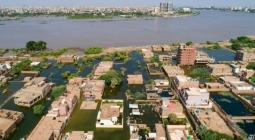Why Asia needs to reduce oil dependency – but how to fund clean energy transition?

- With oil prices rising, there is good reason – besides fossil fuel-induced climate change – for import-heavy Asia to slash oil consumption
- But a mere fraction of the huge amounts of cash needed has so far materialised, meaning finance methods and attitudes must alter
Global benchmark crude oil prices soared to US$95 per barrel earlier this month, stoking expectations that the price of the important commodity may soon cross a psychological threshold of US$100 by the end of the year.
Prices eased to just below US$90 on Wednesday, following the US Federal Reserve signalling higher-for-longer interest rates. But the rally is likely to continue because Saudi Arabia and Russia are expected to maintain output cuts and China’s demand is nudging up.
That is providing a strong economic rationale – besides the misery inflicted by fossil fuel-induced climate change – for heavily-import dependent Asia to slash oil consumption.
Unfortunately, the G20 summit in India this month did not announce a timeline to phase out fossil fuel subsidies, although a statement signalled intentions to triple renewable energy and boost climate finance. Last year, G20 nations provided a record US$1.4 trillion to support fossil fuels.
The New Delhi summit recognised that low-cost climate finance of US$4 trillion must be provided to meet net-zero goals, but did not commit to providing the funds.
Nor did rich nations agree to give more than US$100 billion to developing countries, although the humongous task of addressing climate change will require multiple funding, said Vibhuti Garg, director South Asia, Institute for Energy Economics and Financial Analysis (IEEFA).
While progress is good, she said, “a time commitment on both the renewable energy target and allocation of finance to energy and developing countries” would have strengthened determination to deal with the climate crisis.
Emerging nations say only a fraction of the US$100 billion a year in climate change financing promised by rich nations at a 2009 summit in Copenhagen has appeared.
Clearly, the task is cut out for world leaders before they gather at the year-end COP28 summit in Dubai. Without money on the table, all talk of keeping Earth’s warming to below 1.5 degree Celsius sounds hollow.
Reform of multilateral development banks and a focus on blended finance – loans with more generous terms than market loans, combined with commercial funding – are both vital, to help developing countries deal with climate change.
That said, one Singapore-based executive with a global consultancy involved with the financial sector told me that private capital to mitigate climate change is advanced on the principle of expectations of returns versus risks.
Tremendous efforts are needed, though, that go beyond straightforward market equations.
After all, a clean energy transition is not just about more renewable energy. It involves massive change in entire communities, like those working in coal mines, and reducing emissions in a gamut of industries, including steel to cement.
If private businesses were to act more philanthropically, then they’d likely be downgraded by credit rating agencies.
On the other hand, small and medium firms need a surfeit of cheap funding to effectively tackle climate change.
Unless multilateral development banks are recapitalised with the purpose of providing such low-cost finance, how will climate goals be realised? So far, there is little movement towards establishing such banks, experts say.
Dhruba Purkayastha, director at the international Climate Policy Initiative, said the phasing out of fossil fuel subsidies and coal-based power can be achieved with a transition financing framework without compromising on energy security.
Earlier this year, the Asian Development Bank (ADB) said it had established an energy transition mechanism – piloted in Indonesia and the Philippines – to help Asia become net zero by 2050, leveraging blended finance for activities like retiring or repurposing coal-fired power plants.
The bank said Asia will need to invest US$1.7 trillion annually from 2023 to 2030 to sustain economic growth, reduce poverty, and respond to climate change. Blended finance, which has started making inroads, can substantially meet funding needs.
Establishing a green taxonomy – a system determining if an investment is sustainable – could advance Asia’s efforts, experts say, helping to provide a framework for classifying financial products.
Clearly, though, there is an awful lot of homework that needs to be done before COP28 if intent is to become action.
Biman Mukherji is a senior correspondent with the Post’s Asia desk.





